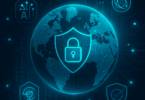The digital world is a very dangerous neighborhood full of attackers ready to steal the most personal and important data for business. At this point we should know that “* security *” means more than having a unique and long password. To understand how to protect our data and accounts, in duosecurity they have compiled the most common forms that attackers use to steal foreign data in the network.
1: Malware
The malware represents a set of threats to a system, such as spyware, keyloggers and Trojans. With this type of malicious software, passwords are a very valuable target for attackers that infect the system. If you think that stealing passwords using malware is complicated, you may be surprised to know that there are some malware kits called DIY (Do it yourself) designed specifically for that purpose. In addition, Trojans are focusing on stealing critical data such as bank access data with a variant to Zeus called Gameover.
2: Gaps in websites
We trust a large amount of sensitive data to websites of all kinds, and security holes are much more frequent than we think. Through several methods, such as SQL injection, remote file upload or a simple brute-force attack to break users’ credentials, websites are continually being attacked. Anyone with a server of their own will know how true this is. Once a password is stolen, the filtered information often ends up in places like pastebin and bittorrent networks, waiting to be used. If you also use the same password on all websites, the damage can be enormous.
3: Incorrect software settings
If you have ever configured a software for the business environment, you will surely know that selecting by mistake (or not selecting) a box or any sensitive configuration can make the difference between being safe or being an easy target. These incorrect configurations that lead to breaches of security are quite common. The complexity of security often leads to minor oversights that become serious problems.
4: Vulnerabilities in the applications
The source code will always have bugs. As we continue to develop larger and more complex applications, the likelihood of code security problems increasing is almost a certainty. In error in checking a piece of code can easily untie in a very serious problem, such as skipping authentication. Therefore, a security flaw in a piece of code could validate an incorrect user or allow the attacker to skip authentication altogether.
5: Phishing scams
Phishing is a way of sending correspondence (such as email) that deceives the victim to click on a link to a form of normal but fraudulent appearance, posing as a legitimate form, like that of our bank. By filling out the form believing it to be legitimate, you are actually sending that data to cybercriminals.
6: Access Control
The last thing a company wants is to appear on a list of the biggest security breaches. Trying to control access to data (or credentials) can be a challenge. Without strong access control, a breach can occur quickly when you forget to change a password or by not restricting where a user can log in from. Many organizations fail to limit the privileges of their employees, do not have sufficiently robust authentication methods or, in some cases, simply do not protect critical data and resources. Without focusing on how data flows from one company to another, and who can access them at any time, information can quickly end up in the hands of an attacker.
conclusion
As we have seen throughout the article, there are many ways in which an attacker can get our data, it is clear that with a password we are not protected, so it is advisable to use, whenever possible, another layer of security as the authentication of two factors. In addition, to generate strong passwords it is possible to use websites specially meant for the purpose. The problem with these types of passwords is that they are impossible to remember. One solution is to save them in a text file and encrypt them with GPG.







